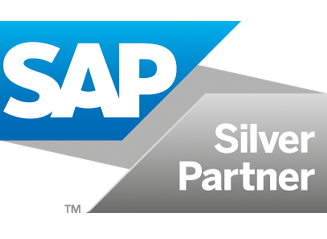Published: September 2025
What Does SAF-T Stand For?
SAF-T stands for Standard Audit File for Tax, a digital file format originally defined by the OECD (Organisation for Economic Co-operation and Development). It provides a consistent framework for businesses to share accounting data with tax authorities in a structured XML format.
The purpose of SAF-T is to help tax administrations conduct audits more efficiently by giving them access to well-organized financial information directly from ERP systems. This standard has become a crucial component of SAF-T compliance, enabling authorities to detect inconsistencies, identify tax fraud, and improve data analysis without relying on manual reviews or physical documentation.
What Is the Full Form of SAF-T?
The full form of SAF-T is Standard Audit File for Tax. This format supports tax administrations by offering a uniform, digital method to receive accounting data from businesses. SAF-T files typically include:
- Master data (customers, suppliers, tax codes)
- Transactional data (journal entries, payments)
- Source documents (invoices, credit notes)
By presenting this data in a structured XML schema, SAF-T enables automated processing, risk assessment, and streamlined audits. The standard plays a key role in the digitalization of tax processes across the globe, and is often a foundational element in a country’s broader SAF-T compliance international strategy.
How Does SAF-T Work?
SAF-T works by converting internal accounting data into a machine-readable XML file that adheres to a country-specific schema. The process typically involves:
- Data Extraction: Financial records are pulled from ERP or accounting systems.
- Data Mapping: Extracted data is mapped to a SAF-T structure defined by local tax authorities.
- Validation: The file is tested against technical and logical rules (e.g., date formats, tax code consistency).
- Submission: The SAF-T file is uploaded either on a periodic basis or during a tax audit.
Unlike real-time e-invoicing systems, SAF-T is mostly used for retrospective audit purposes, offering comprehensive access to historical financial records. This makes SAF-T particularly useful for authorities needing deep analysis of a company’s full financial activity—not just invoices.
What is SAF-T Reporting?
SAF-T reporting refers to the process of generating and submitting SAF-T files to tax authorities. Depending on the jurisdiction, this can be mandatory on a monthly, quarterly, or annual basis, or required only during audits. The goal is to provide governments with a complete, structured view of a company’s accounting records.
SAF-T reporting typically includes the following components:
- General Ledger entries
- Accounts receivable and payable details
- Inventory or fixed assets (in some jurisdictions)
- Sales and purchase invoices
Tax administrations use these reports to verify compliance, reconcile declared VAT amounts, and detect anomalies. As part of broader digitalization efforts, SAF-T reporting is increasingly seen as a best practice for enhancing fiscal control while minimizing taxpayer burden.
SAF-T Compliance: A Strategic Requirement
SAF-T compliance has emerged as a strategic obligation for companies operating in jurisdictions with mandatory digital tax reporting. Being compliant involves more than simply generating a file—it requires system integration, data accuracy, and ongoing validation routines.
Key elements of SAF-T compliance include:
- Ensuring ERP systems can export data in the correct XML format
- Regularly updating tax codes and master data
- Performing pre-submission validations to avoid rejection
- Coordinating between finance, IT, and tax departments
For multinational companies, SAF-T compliance must be adapted to different countries’ schemas, submission methods, and audit frameworks. This is where SAF-T compliance international becomes relevant, as businesses must manage varying formats while maintaining central oversight.
SAF-T Compliance International: Country-by-Country Adaptations
Though the SAF-T format originates from OECD guidance, each country implements it differently, resulting in a range of localized standards and processes. Here are examples of how SAF-T compliance varies internationally:
Poland – JPK Structure
Poland’s SAF-T framework, called Poland JPK (Jednolity Plik Kontrolny), includes multiple file types (e.g., JPK_VAT, JPK_KR, JPK_MAG) to address different accounting functions. Businesses must submit JPK_VAT files monthly, while other JPK types may be requested during audits.
The structure is detailed and subject to strict validation, making data integrity essential for SAF-T compliance in Poland.
Portugal – SAF-T PT
In Portugal, SAF-T PT requires monthly submission of invoice-level data for VAT purposes. Invoices must also be hashed and serialized within certified accounting systems. The SAF-T file serves both audit and pre-filling of VAT returns, integrating deeply with tax authority systems.
Portugal is widely recognized as a leader in SAF-T compliance international adoption.
Lithuania – i.MAS System
Lithuania’s i.MAS platform combines SAF-T (i.SAF-T) with real-time invoice reporting (i.SAF) and transport tracking (i.VAZ). SAF-T files are submitted upon request during audits, and their scope includes general ledgers, invoices, and payments.
The i.MAS system illustrates how SAF-T can function as part of a broader digital tax environment.
Norway – Audit-On-Demand Model
Norway does not require periodic SAF-T submissions. Instead, companies must maintain SAF-T-ready files and provide them during audits. The Norwegian SAF-T schema focuses on general ledger entries, customer and supplier data, and VAT information.
This model highlights a lighter, audit-focused approach to SAF-T compliance.
France – FEC (Fichier des Écritures Comptables)
Although not labeled “SAF-T,” France’s FEC is functionally similar. Businesses must generate a file containing journal entries in a prescribed format during audits. The FEC requirement aligns closely with SAF-T principles and is part of the broader push toward digital audit trails.
Technical Foundation: XML Schema and Structure
The SAF-T format is built on XML schema definitions that ensure consistency, validation, and machine-readability. Each country’s schema includes:
- Field-level requirements (mandatory vs optional)
- Hierarchical relationships (e.g., invoice linked to customer)
- Allowed value types (e.g., VAT code formats)
- Date, currency, and numerical standards
These rules allow tax authorities to process and analyze data automatically, improving efficiency while reducing manual errors.
For businesses, meeting these technical standards requires:
- Proper data mapping
- Cleansing outdated master records
- Regular system testing
- Automated generation routines
A strong SAF-T compliance program not only fulfills legal requirements but also improves data governance and internal controls.
Conclusion
SAF-T has become a key building block in global digital tax transformation. It supports transparent, standardized, and efficient communication between businesses and tax authorities. Whether used for periodic reporting or audit readiness, SAF-T provides a detailed view of financial operations that enhances trust and compliance.
As more governments adopt and refine SAF-T-based systems, SAF-T compliance international is no longer optional for global businesses. By investing in systems, processes, and coordination, companies can turn compliance into a competitive advantage—strengthening not only audit performance but also operational efficiency in the digital age.





